Writings, Designs and Responsibility: A Closer Look at Graffiti and Street Art in Pisa
By Artha Abeysinghe,
This article recounts an activity that I did as part of the “Princeton in Pisa” program at the Scuola Normale Superiore di Pisa.
My friend Sicile and I went around Pisa, to find and ask people what they thought of graffiti and street art. The sun was not our friend today…
Our first encounter was with a man who was sitting next to a statue of Nicola Pisano listening to music. He explained to us that he was resting, between one lesson and another. He was a student and had just taken exams. He liked the statue and wouldn’t change anything about it – he said it was a nice place to rest. Although the statue was not covered in graffiti, it was an important place to realize the impact that works of art can have on a space; the statue transforms it into a place to rest.
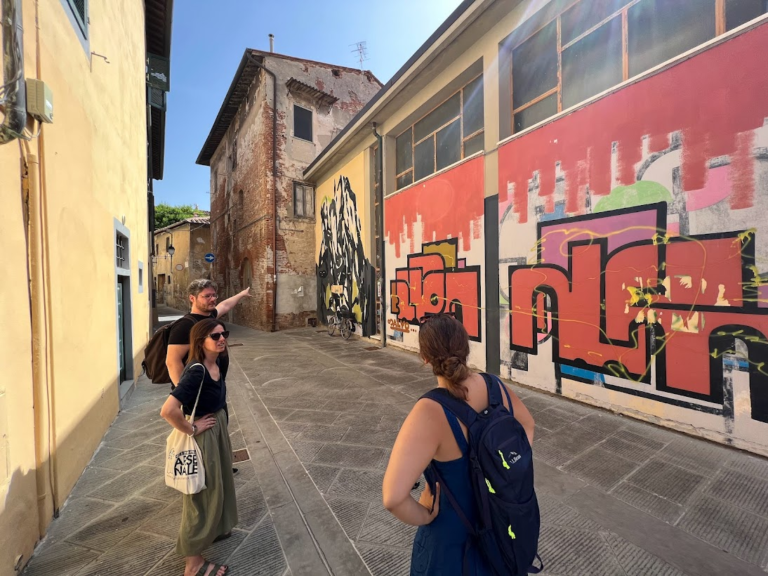
Then we went to look for two works of graffiti, one by Giorgio Bartocci, and one by Linea Piatta. When we arrived, a couple was leaving their house, located right in front of the graffiti. Being people who live so close to this graffiti, their opinions were very important to understand how graffiti and art impact public spaces. They liked the original work, but not the graffiti that had been drawn over it. If they could change anything, they would remove the yellow graffiti that ruins the original work. After this conversation, we realized that these artists have a responsibility: their art can enhance a space and contribute to the beauty of the place, but also has the potential to ruin it.
Then we went around the alleys: the graffiti here was less organized and conveyed a sense of roughness and coarseness. We met a man who was not from Pisa, but instead came from Treviso. He did not like this poorly organized graffiti, and he also told us that he did not like writing, he preferred drawings. Starting from the example of his city, he explained how the graffiti with the drawings found along the river in Treviso promoted the beauty of the landscape, while the graffiti written in the alleys of Pisa were chaotic and distracting. Later we also met a woman who was taking a walk with her dog, and she said the same thing.
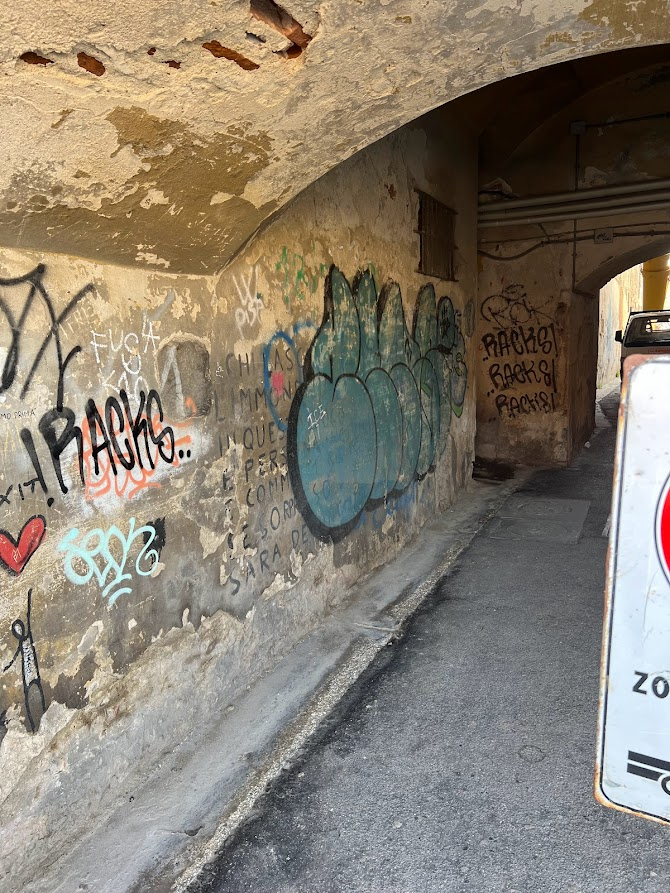
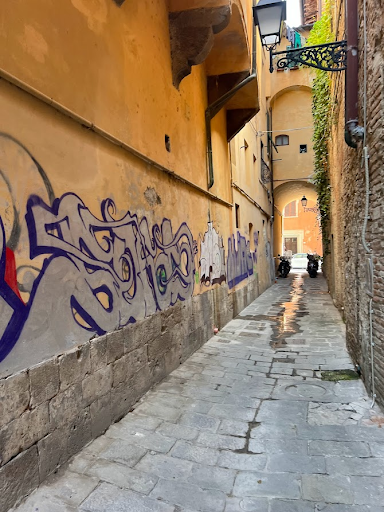
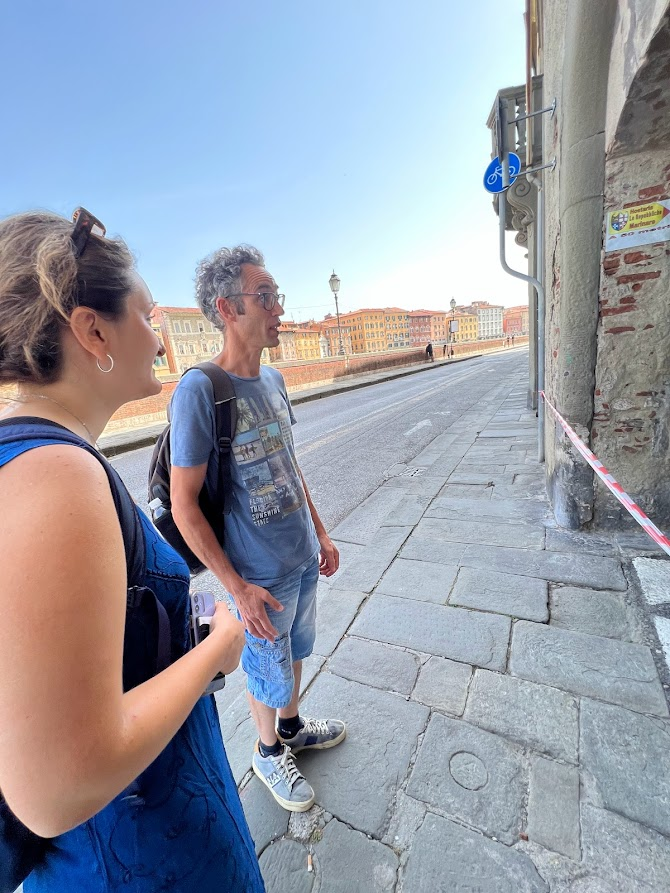
At the end, we decided to get out of the city center towards suburban streets, and here we saw art along the walls.
While Sicile and I were walking, she noticed that there were no writings on these works. I proposed an explanation: perhaps the reason why they consist only of drawings is because the road is mostly traveled by car, so drivers do not have time to read words, but only to see the drawings.
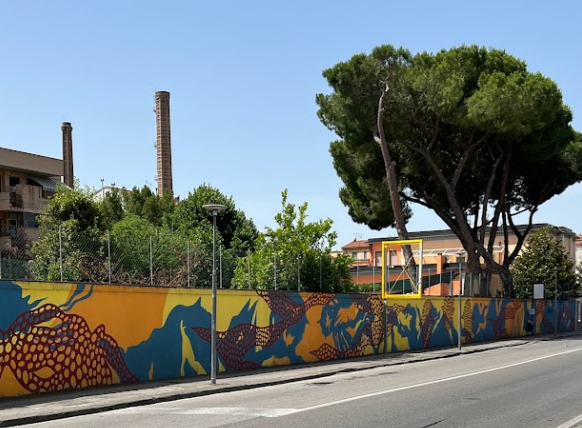
When we arrived in the center of this suburban area, there was a group of buildings decorated with drawings. We talked to a woman (who seemed German) who was taking a walk with the dog. She liked these buildings with drawings, and she said “the most art possible is better”:
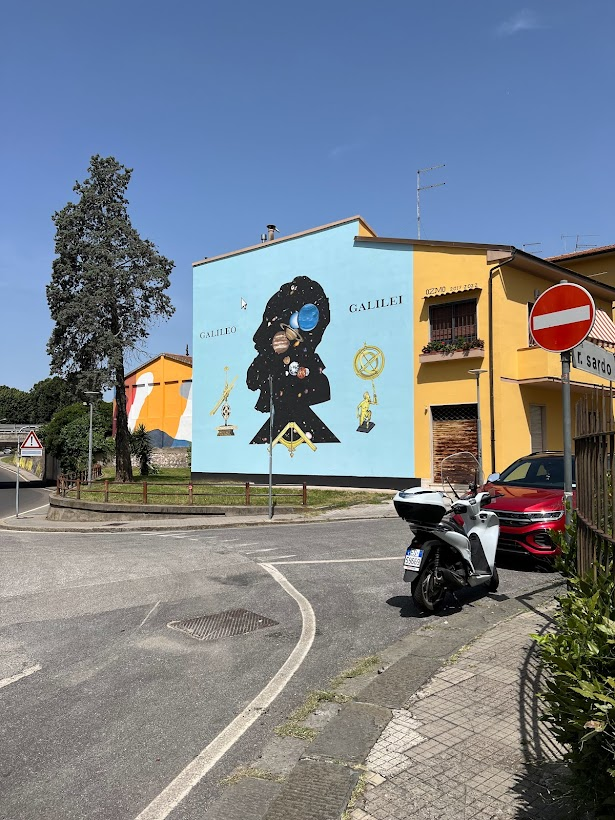
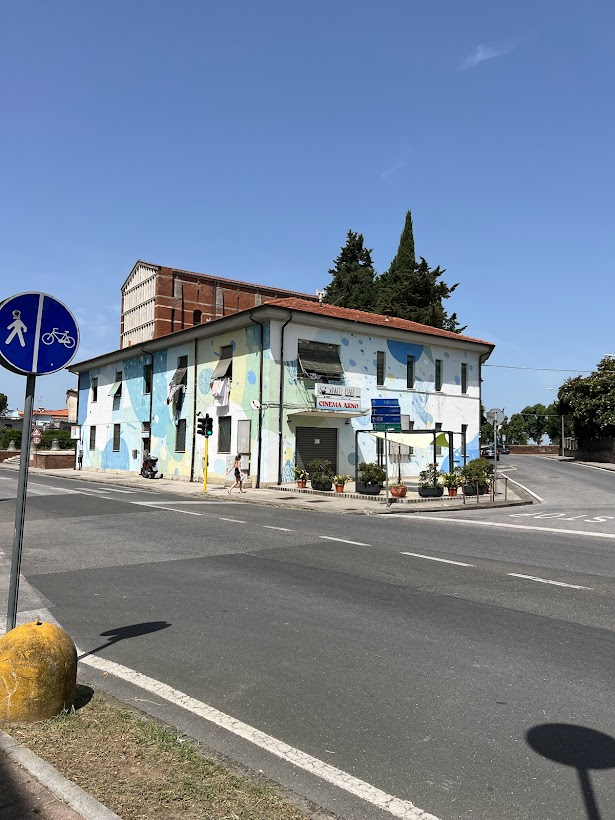
At the end of this morning, we learned that street art is more complex than we had previously imagined: there are differences between art formed by writings and that formed by drawings, as well as between a commissioned work and one made illegally. At the end of the day, the responsibility fundamentally lies with the artist to decide how art can change the space.

Author’s Biography:
Artha is a student at Princeton University who studies computer science but also plans to get a minor in Italian. He has been studying the language for eight years and this summer, studied for a month at the Scuola Normale Superiore in Pisa as part of a Princeton program.
